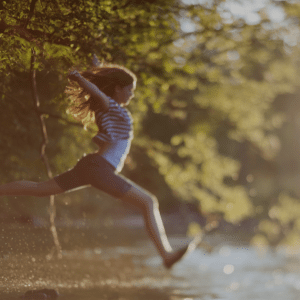Here are some helpful tips from our Pediatric Dentist, Dr. Fran.
Sometimes children will go to battle on even the most routine of things: changing out of their pajamas, eating veggies, brushing their teeth. When it comes to the latter, there are so many factors that feed into the experience. Your child may be tired, they may have had a long, overwhelming day, they simply might just not feel like brushing their teeth – don’t worry, it happens!
Our recommendation is that you should brush your child’s teeth for them – two minutes twice a day – until they turn 8 or 9. A good rule of thumb that indicates your child’s readiness to brush their teeth on their own is if they can tie their own shoelaces. We know that may seem like a long time but if you take each brushing as it comes, hopefully, you’ll find new and fun ways to engage with your child as the years go on. Brushing and flossing can be fun! Here are some of our favorite tips and tricks:
What toothbrush should we use for our children?
Dr. Fran recommends toothbrushes with soft bristles for everyone. If you have been using silicon bristle brushes for your baby, you can start transitioning to a regular soft bristle brush when their first teeth erupt. At young ages, it’s important to check for frailing bristles frequently as they will make brushing more uncomfortable and ineffective. If you find that your child likes to bite on a toothbrush, try using two brushes: one for biting and one for actual brushing!
Should I start using an electric toothbrush for my little one?
If you’re using a regular toothbrush for your child without much difficulty and we can confirm that you’ve been doing a great job, then keep doing what you’re doing! Electric toothbrushes can make the brushing more effective, fun, and motivating for little ones who are not having as much fun with regular brushes. It can also make it easier for you to clean ‘difficult access areas’ in your child’s mouth like the very last top molars. Dr. Fran recommends first trying out inexpensive battery-powered toothbrushes with a small brush head for younger children. If your little one is happy with the vibration of the electric toothbrush, you can invest in rechargeable electric toothbrushes with replaceable brush heads.
What toothpaste should we use for our child?
Children can be sensitive to the flavour of toothpaste. Conversely, if they like it, they don’t want to stop and often swallow the toothpaste. This is why toothpaste selection is one of the topics that we discuss most often with parents, especially for young children. Dr. Fran recommends using any children’s toothpaste that contains fluoride and that your child likes, regardless of the brand. For infants and children who are unable to spit, use a smear (grain of rice size) of fluoridated toothpaste. Once children are able to spit, you can start using a green pea-size amount.
If you’re not comfortable using fluoride toothpaste, ask Dr. Fran about alternative ingredients to protect your child’s teeth against cavities, such as Xylitol and MI paste.
How often should we brush our child’s teeth?
Your child’s teeth should be brushed for two minutes, two times a day. Once the teeth start to touch and you can’t see in-between them, flossing should start too. Try using a floss stick for little ones from a young age so that they get used to it early on.
Any tips for a fun brushing session?
Two-minute long brushing might be an impossible task on some days, depending on your child’s energy level. Dr. Fran recommends being creative with brushing sessions! Here are some ideas to try with a common theme of keeping a positive vibe with brushing.
- Take a short break in-between brushing the top and bottom teeth
- Put stickers on and decorate toothbrushes with your child
- Shop together for toothbrush and toothpaste
- Have a few selections of toothbrush and toothpaste and allow them to pick
- Let your child brush your teeth while you brush theirs
- Distractions can be useful such as singing a song, listening to a podcast, or watching a show
- Watch a sibling have their teeth brushed first
- Try brushing on the bed or sofa. It doesn’t have to be in the bathroom all the time
Brushing may still involve some tears for little kids. Make sure to have everything ready (including a floss stick), perhaps even an extra set of hands to make the brushing session as quick and efficient as possible. For younger children, the emphasis should be placed on letting them understand that brushing is a part of their morning and nighttime routine.
Don’t forget these most commonly missed areas from brushing!
- Upper front teeth under the lip. Gently lift their upper lip when brushing this area.
- The cheek side of the upper molars. Ask your child to bite down while you clean this area to allow more space for the toothbrush.
- The tongue side of the lower molars. Gently push their tongue away with the toothbrush head then brush the area. You will need to do some dancing with the tongue!
If you have any questions or just want to say hello, you can reach us by email, phone or even by dropping by!



